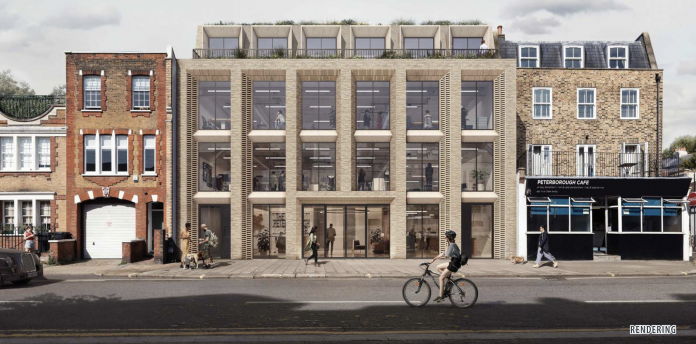With soaring bills and supply concerns putting the focus on the energy efficiency crisis, Nick Jacobs, executive managing director of Taurus UK, looks at the key drivers of green buildings
With the UK bracing for the first of two likely winters with “challenged” energy supplies, Britons are looking to cut their consumption wherever they can. And with the built environment representing about 40% of the UK’s energy consumption, buildings are a primary target. Even as energy subsidies palliate monthly bills’ short-term punch, climate and geopolitical climate concerns have British tenants demanding their buildings consume less fossil fuel – and quickly.
Energy efficiency crisis: Planning for today and tomorrow
This desire manifests with two trends: efficiency and electrification. First, efficiency: tenants want buildings that can power their lives and businesses as usual, but with less energy – both overall and, especially, with minimal oil and gas.
This demand for independence from the geopolitics of foreign tankers and pipelines leads us to the second trend: electrification. Tenants want to source their energy “locally” – whether from the grid or from onsite generation. These changes, the thinking goes, can insulate their energy access from current and future geopolitics.
This desire for energy independence dovetails with the national push for energy decarbonisation. With the UK committed to Net Zero by 2050, and over 60% of urban emissions (78% in London) attributable to buildings, decarbonising residential, commercial and industrial real estate will be one of the coming decades’ principal challenges, and increasing energy efficiency is the first step towards this goal.
The second step, electrification, is less a step towards sustainability today than preparation for sustainability tomorrow, as the UK grid – currently, 57% fossil fuels is set to be net zero, with a 93% reduction in actual emissions, by 2050. In the meantime, new build, fully electrified, energy-efficient buildings linked to the current grid will be required to emit 75% less carbon in 2025 than a comparably sized, non-retrofitted building today.
British public demand more sustainable infrastructure
While governments and businesses set decarbonisation targets, perhaps the biggest push for more sustainable infrastructure comes directly from the British public. 82% say they are concerned or very concerned about climate change, up from 65% in 2012. This trend is true across demographics but stronger in younger generations, peaking at 85% for people younger than 34.
Taken together, these figures indicate that developers’ prospective tenants take their sustainability seriously – and that seriousness will only increase as younger generations grow into greater responsibility. Investment in a building’s sustainability, in other words, is paramount to its retaining value over time.
Already, developers are getting the message: the Royal Institution of Chartered Surveyors’ 2022 Sustainability Report found that 65% of [UK] contributors note that occupier demand for green buildings has risen over the past 12 months, a figure similar to that of investor demand (66%). Similarly, the UK Green Construction Industry’s 2021 report predicted an annual sector growth rate of 9.8% between 2021 and 2025.
Retrofitting will be instrumental in solving the energy efficiency crisis for housing stock
However, greening new construction is but a fragment of the solution: new buildings will only ever comprise some 20% of housing stock. Consequently, the twin aims of household energy reduction and reduced global carbon footprint will be forced to centre on energy-efficiency retrofits.
Property owners and developers who want to act on this growing demand can think of retrofits in four steps:
- Insulate: Seal the building envelope – think caulking windows, sealing ductwork, patching holes and reinforcing pipes for hot water systems and HVAC.
- Upgrade: Install technologies that maximise energy efficiency. Think LED lights, induction hobs; white, green, or solar roofs; double-paned, double-glazed windows; and – perhaps most centrally – replacing fossil heating and cooling with air- or ground-source heat pumps.
- Electrify: Replace all gas- or oil-operated technologies with grid-connected, energy-efficient equivalents. At this stage, one way to address geopolitical and climate concerns while adding to present and longer-term building value is to incorporate electric vehicle charging stations. Asset types differ in preparation required but across sites, demand for charging stations will rise.
- Offset: Once the site has reached its maximum energy efficiency, the next step is to offset the remainder with rooftop solar. If the roof is unsuitable for solar or otherwise occupied with green space or other rooftop amenities, investment in community solar is a viable alternative.
Of course, these retrofits add cost. As the pipeline of contractors, technicians and others specialised in green building and retrofits improves, these additional costs should decrease. Furthermore, upgraded technologies save enough on operations costs by virtue of their increased energy efficiency that over their lifetime they more than pay for themselves.
Consequently, property owners and developers who invest the capital now to upgrade their assets will see long-term returns advanced through cost savings and property value boosts alike. They will also help to buffer themselves and their tenants from the tumultuousness of our increasingly connected but ever-fragile world. The move must be from Brown to Green.
Nick Jacobs

Executive managing director
Taurus UK

















